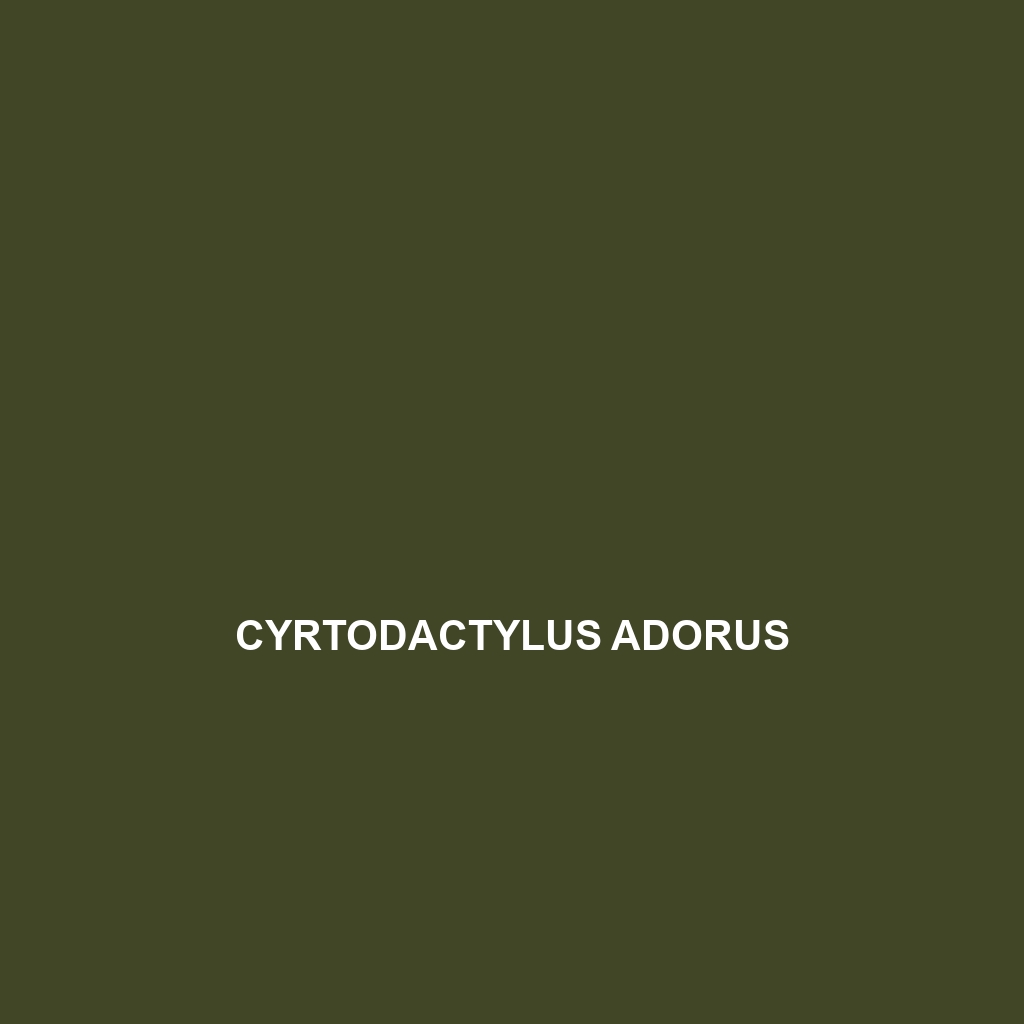Cyrtodactylus adleri
Common Name: Cyrtodactylus adleri
Scientific Name: Cyrtodactylus adleri
Habitat
Cyrtodactylus adleri is primarily found in the mountainous regions of Southeast Asia, specifically on the islands of Sumatra and Borneo. This species thrives in humid subtropical environments, often inhabiting tropical rainforests and limestone karst formations. The preference for such habitats allows them to exploit the diverse flora and fauna present in these ecosystems, providing ample cover and resources.
Physical Characteristics
This species of gecko measures about 10 to 15 centimeters in length. Cyrtodactylus adleri typically has a robust body with a distinctively flattened head and elongated limbs. The coloration is generally a blend of brown and gray, with dark bands marking its skin, offering enhanced camouflage against tree bark and rocky surfaces. Notable features include large, well-developed toes that aid in climbing and a prehensile tail that can be regrown if lost.
Behavior
Cyrtodactylus adleri is primarily nocturnal, exhibiting activity during the night when it forages for food. This gecko is an adept climber, often seen scaling vertical surfaces in search of insects and shelter. They are known to be territorial, with males displaying aggressive behaviors during mating season. Their ability to adapt to various microhabitats within their environment showcases their resilience and survival skills.
Diet
The diet of Cyrtodactylus adleri consists mainly of insects, including crickets and beetles, making them insectivorous in nature. They exhibit sit-and-wait predation behavior, using their camouflage to ambush unsuspecting prey. This dietary habit plays a crucial role in controlling insect populations within their habitat, highlighting their significance in the ecosystem.
Reproduction
Cyrtodactylus adleri breeds during the rainy season, which typically spans from May to October. Females lay clutches of two eggs, often in sheltered locations to protect them from predators. The young hatch after about 60 days, and studies indicate that the hatchlings are self-sufficient from birth, quickly adapting to their surroundings.
Conservation Status
The current conservation status of Cyrtodactylus adleri is classified as vulnerable. Habitat destruction due to deforestation and human encroachment poses significant threats to their population. Conservation efforts are crucial to ensure the survival of this unique species and its habitat.
Interesting Facts
Cyrtodactylus adleri is named after a prominent herpetologist, further emphasizing its significance in the field of reptile study. It is known for its remarkable ability to change color in response to environmental changes and stress, a fascinating adaptation that helps it blend into various surroundings.
Role in Ecosystem
Cyrtodactylus adleri plays a vital role in its habitat as both a predator and prey. By feeding on insects, it assists in maintaining ecological balance, while serving as a food source for larger predators. Its presence indicates a healthy ecosystem, as its populations are sensitive to changes in the environment, making them an essential bioindicator species.
